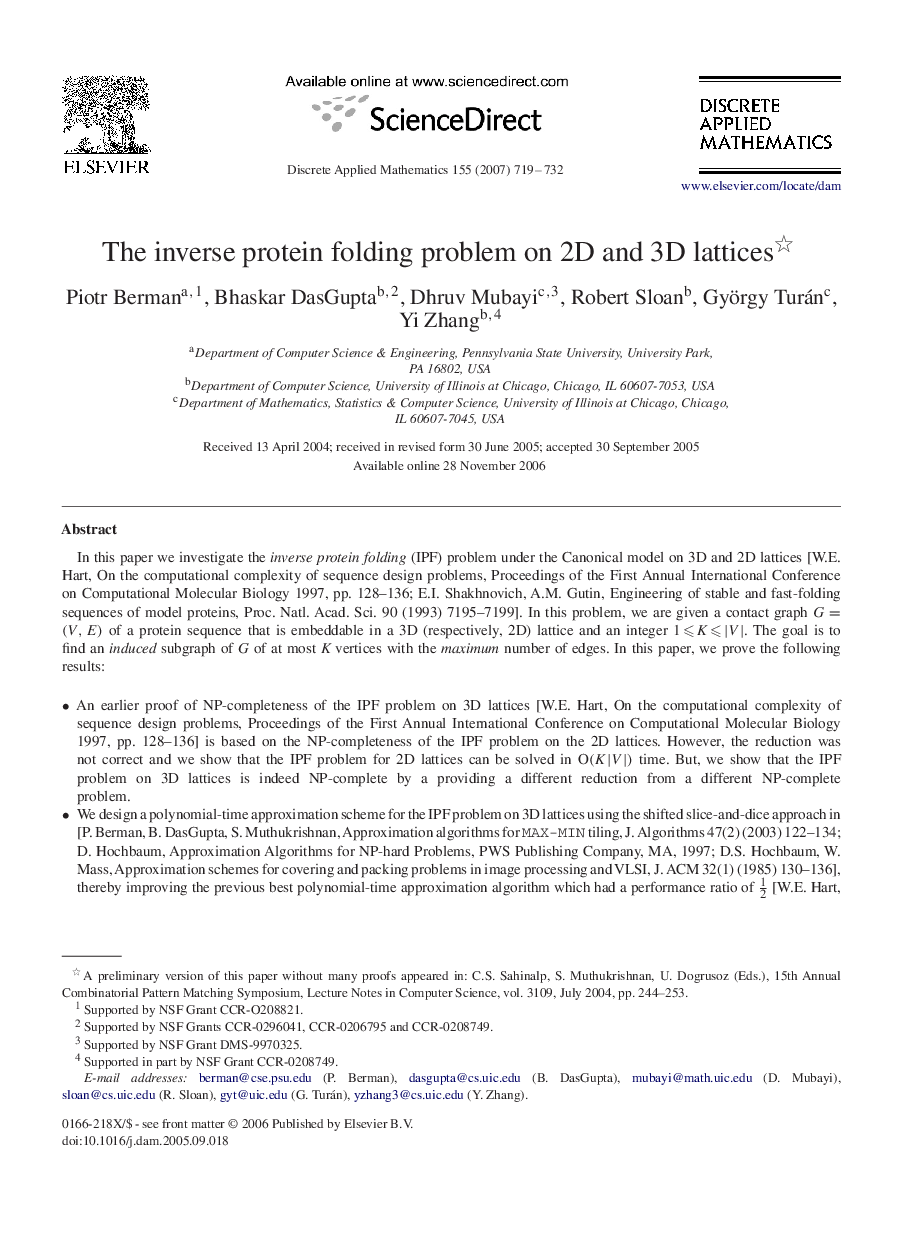| Article ID | Journal | Published Year | Pages | File Type |
|---|---|---|---|---|
| 420697 | Discrete Applied Mathematics | 2007 | 14 Pages |
In this paper we investigate the inverse protein folding (IPF) problem under the Canonical model on 3D and 2D lattices [W.E. Hart, On the computational complexity of sequence design problems, Proceedings of the First Annual International Conference on Computational Molecular Biology 1997, pp. 128–136; E.I. Shakhnovich, A.M. Gutin, Engineering of stable and fast-folding sequences of model proteins, Proc. Natl. Acad. Sci. 90 (1993) 7195–7199]. In this problem, we are given a contact graph G=(V,E)G=(V,E) of a protein sequence that is embeddable in a 3D (respectively, 2D) lattice and an integer 1⩽K⩽|V|1⩽K⩽|V|. The goal is to find an induced subgraph of G of at most K vertices with the maximum number of edges. In this paper, we prove the following results:•An earlier proof of NP-completeness of the IPF problem on 3D lattices [W.E. Hart, On the computational complexity of sequence design problems, Proceedings of the First Annual International Conference on Computational Molecular Biology 1997, pp. 128–136] is based on the NP-completeness of the IPF problem on the 2D lattices. However, the reduction was not correct and we show that the IPF problem for 2D lattices can be solved in O(K|V|)O(K|V|) time. But, we show that the IPF problem on 3D lattices is indeed NP-complete by a providing a different reduction from a different NP-complete problem.•We design a polynomial-time approximation scheme for the IPF problem on 3D lattices using the shifted slice-and-dice approach in [P. Berman, B. DasGupta, S. Muthukrishnan, Approximation algorithms for MAX-MIN tiling, J. Algorithms 47(2) (2003) 122–134; D. Hochbaum, Approximation Algorithms for NP-hard Problems, PWS Publishing Company, MA, 1997; D.S. Hochbaum, W. Mass, Approximation schemes for covering and packing problems in image processing and VLSI, J. ACM 32(1) (1985) 130–136], thereby improving the previous best polynomial-time approximation algorithm which had a performance ratio of 12 [W.E. Hart, On the computational complexity of sequence design problems, Proceedings of the First Annual International Conference on Computational Molecular Biology 1997, pp. 128–136].
